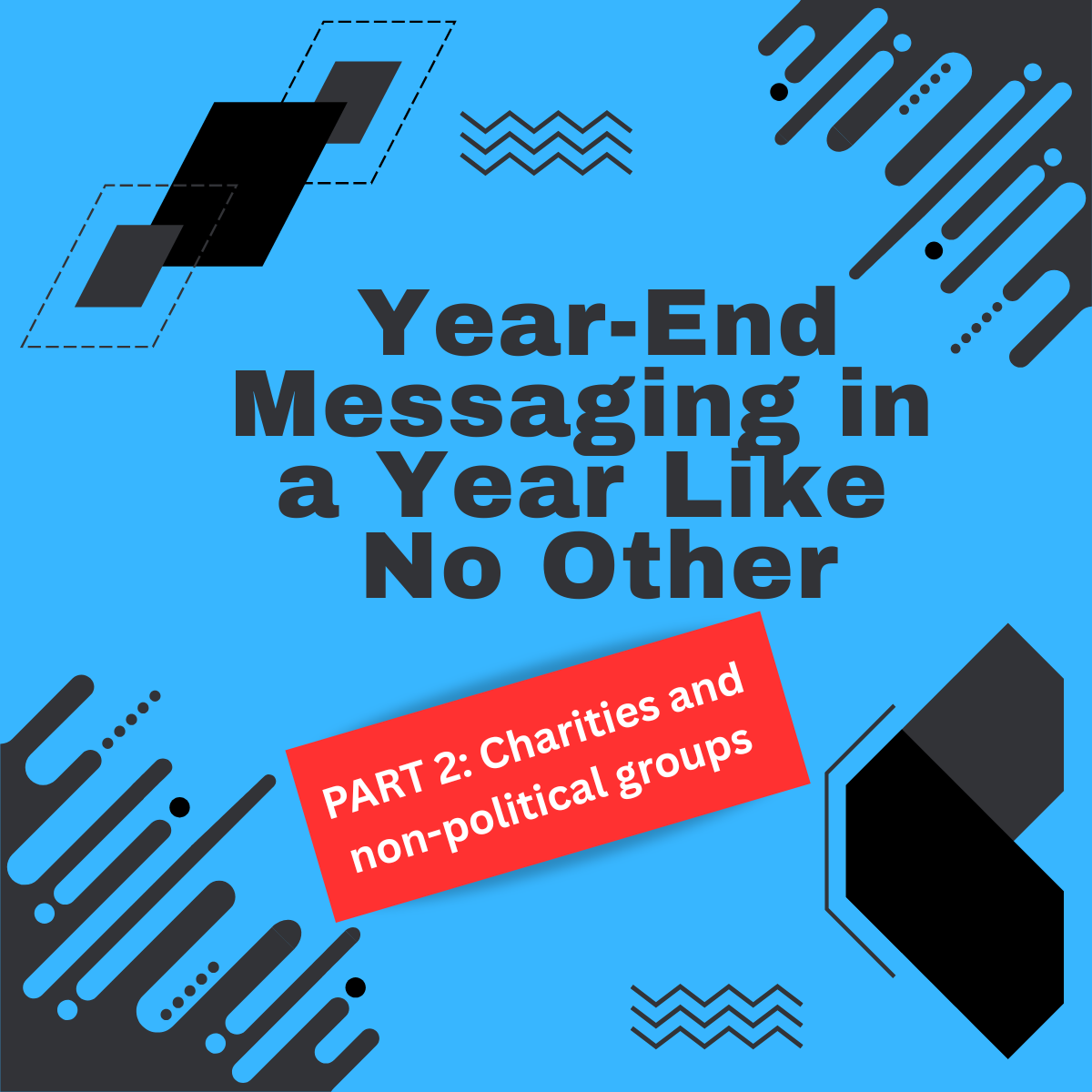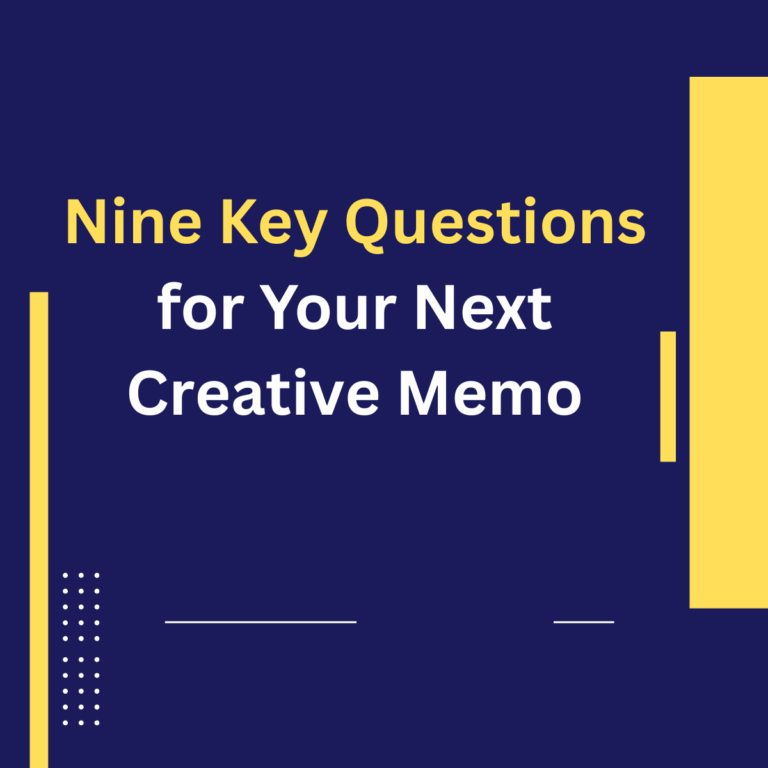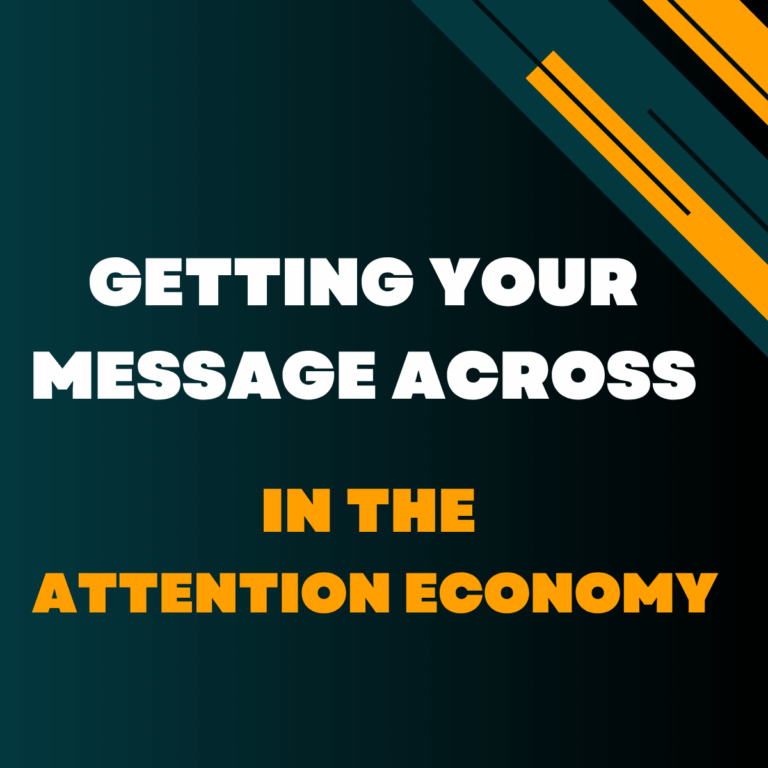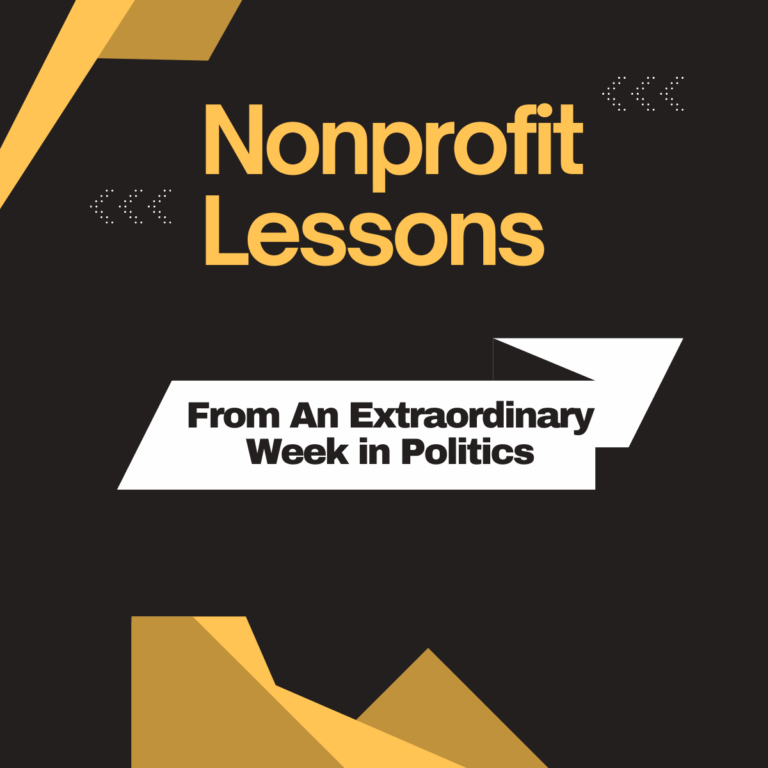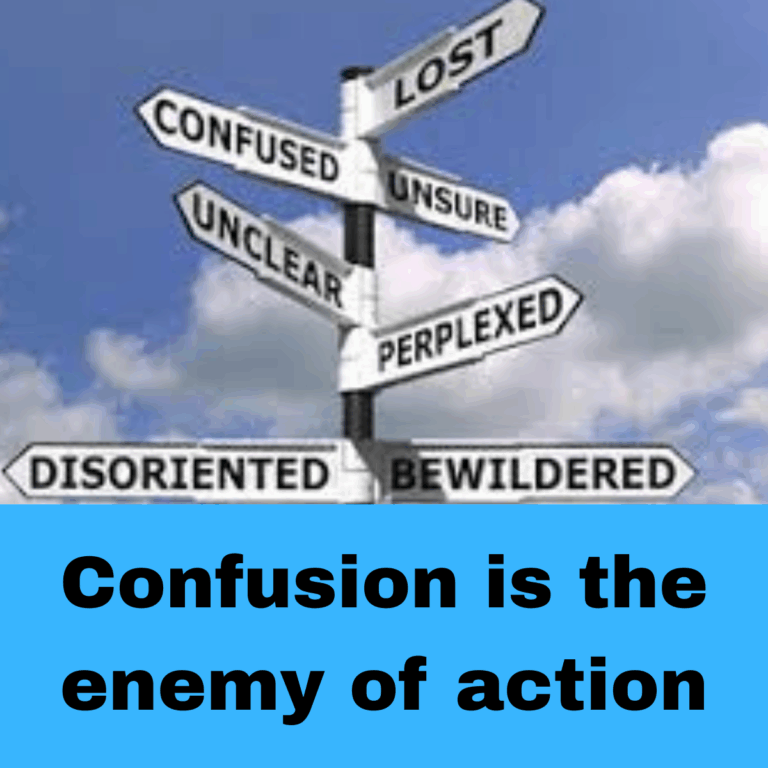What’s the right approach to year-end messaging at the end of a year like no other?
In last week’s memo, we discussed this question from the perspective of political and advocacy groups. Welcome to Part Two tackling the same vital question with our lens turned to charities and non-political organizations.
The implications of this extraordinary year fall most heavily on political and advocacy groups. But few organizations — regardless of their mission — will be able to simply waltz through the year-end without any regard to the broader political climate.
So, let’s jump right in with some guidelines specifically tailored to charitable and other non-political groups.


First things first. I’m suggesting it would be unwise to take a “head in the sand” approach and ignore the overall context of the year your audiences are going through. But that’s all. The last thing you should do is get carried away and start casting aside everything you know about what messages and tactics work for your group at year-end.
You just need to be more intentional as you deploy them. Look at those tried and true messages and tactics and ask yourself “Does this work in the current environment or do I need to revise or tweak it?”

This year, there’s an important dynamic in the non-political sector we have to take into account. Right after the 2024 election, I predicted that, given the disruption-focused Trump agenda, it would become harder for many groups that have long avoided political engagement to stay above the fray.
That prediction has unfortunately been borne out as the administration drives to control university policies, disrupt and defund vital scientific research, withdraw funding for global humanitarian efforts, and undermine access to lifesaving vaccines. As a result, year-end messaging challenges will differ for two sets of non-political groups:
- “Into the fray” groups whose work and mission are being directly impacted by the far-reaching, disruptive Trump agenda.
- “Beyond the reach” groups whose work is far enough removed from politics and public policy to avoid any direct 2025 Trump impact.
I will refer to how this distinction plays out in year-end messaging throughout the following recommendations.

Remember this: Even nonprofits whose work and mission remain untouched by Trump administration activities are communicating to audiences anything but immune from the overall climate in this year like no other.
So, as you write year-end messages, it’s important to be alert to your audience’s overall emotional state. But here’s the difference. As I noted last week, for many political and advocacy groups, the Trump assault will be the defining context for their entire year-end message.
But for “beyond the reach” organizations, all that will make sense is a momentary nod recognizing the tense times – ideally one that puts your work in a compensating, restorative light.
I’m thinking language along these lines: “There’s a lot of focus on what divides us these days. But one thing we can all agree on is that . . .” Or “I still believe that there’s more that unites us than divides us. And we prove that every day by . . .”

On the political front, it has been a disconcerting year for many donors. People are just hanging in there with little to celebrate or feel great about. That context tends to create a thirst for simple, direct ways to have a positive impact.
If non-political groups add to donors’ dismay by laying out difficult challenges that don’t hold much promise of immediate success, people just may not be able to muster the energy and spirit to participate.
But, if you can run counter to difficult political messaging and give people easily grasped opportunities to really do some good, you will be far more likely to generate engagement and support.

Now what if your work has been disrupted by Trump administration actions – childhood cancer research you were conducting defunded, art exhibitions you were planning disrupted, vaccines your health center delivers to communities in need called into question, etc.
How you handle your year-end message depends on how you’ve shaped the conversation with your audiences throughout the year. But simply disregarding the unique challenges you’ve faced is unlikely to be the best strategy. An authentic conversation about difficulties people know you are facing is almost always the better option than pretending the problem isn’t there so you can avoid sounding “too political.”

It’s all in the positioning. People will be more supportive of your message if your language and stance reflect reluctantly being pulled into the fray as opposed to willingly choosing to join it. You’re standing up unflinchingly for the people you serve and the vital programs you carry out. You’re not joining a political anti-Trump movement.
Here’s the test. If it reads like you’re responding to Trump and his administration invading your world, you’re on solid ground. But if it reads like you’ve made a proactive decision to enter Trump’s world, you’re on shaky ground.

There’s a tendency to think of year-end giving as starting with Giving Tuesday and coming to a head in the final two days of the year. That’s valid in terms of income in the door. But it’s not the right timeline on the messaging front.
The reality is groups that spend October and November building messaging momentum do the best at year-end. In communications terms, it’s smart to think of the last 100 days of the year as a time when it’s especially important for your work to stand out and truly engage people.

Groups of every stripe will have to be smart and deliberate as we navigate year-end messaging in this year like no other. I hope these ideas and recommendations will be helpful as you work on some of the most important messages you will create this year.


